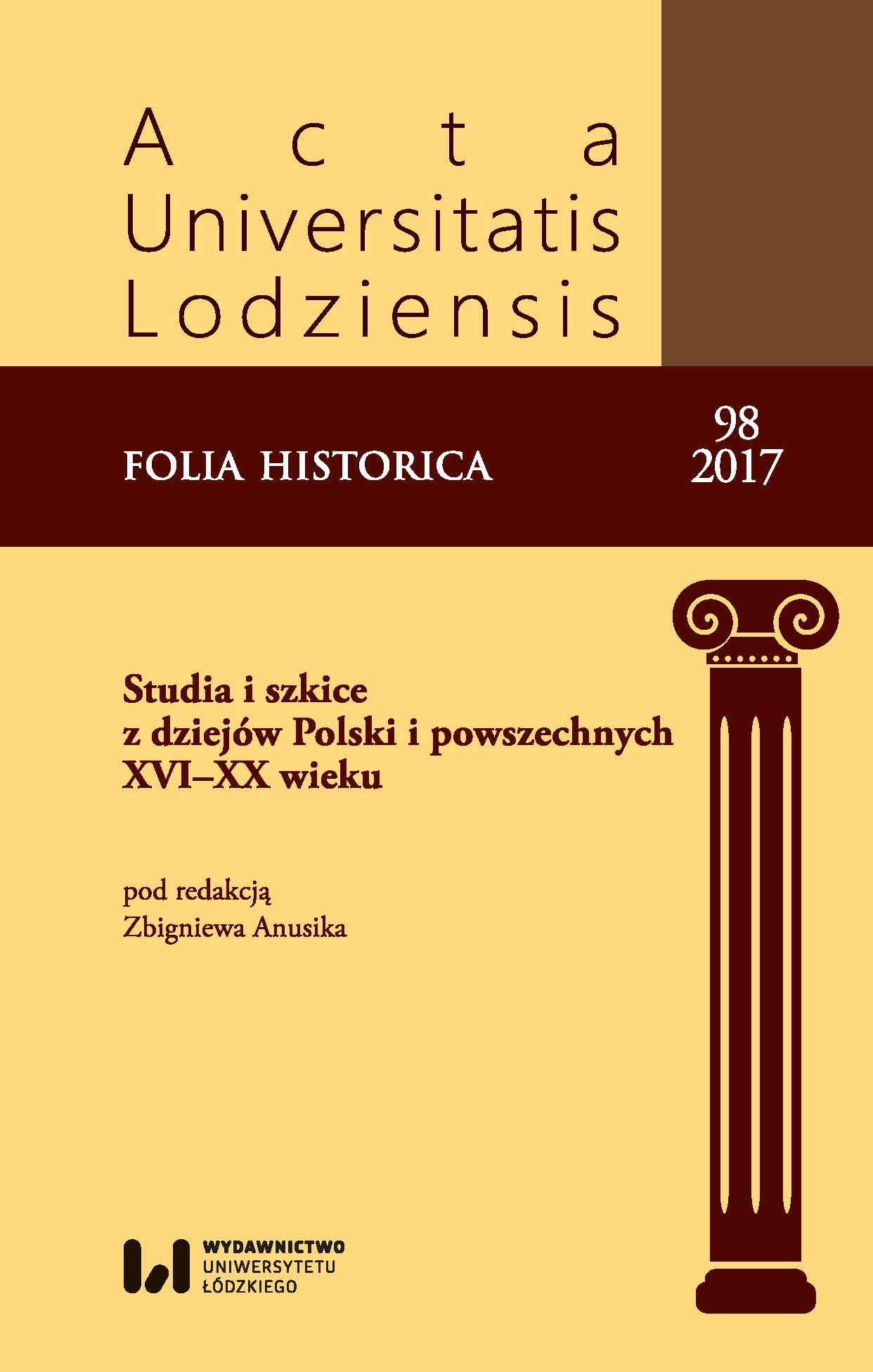Konflikt katolicko-ewangelicki w Osiecznej w latach 1656–1769
The Catholic-Protestant conflict in Osieczna between 1656 and 1769
Author(s): Adrian GenderaSubject(s): History, 17th Century, 18th Century, History of Religion
Published by: Wydawnictwo Uniwersytetu Łódzkiego
Keywords: Osieczna; Storchnest; pastor; conflict; Catholics; evangelicals; Polish-Swedish war 1655–1660; protestants; Clapius; Wüstehube; pastor; konflikt; katolicy; ewangelicy; potop szwedzki; protestanci
Summary/Abstract: In the 17th and 18th centuries Osieczna, a small town 10 km north of Leszno, was a conflict zone of two Christian denominations – Catholics and evangelicals. The main cause of religious unrest and the consequence of the fall of the Evangelical community was the Polish-Swedish war 1655–1660 and related political and religious disturbances among the inhabitants of the Leszno region. It also was a consequence of the doctrinal and ecclesiological differences of believes and the intensifying of so-called counter-reformation. The first persecution of the evangelical community took place between 1656–1666. At that time, pastor Joachim Wüstehube was banished from the city. Another wave of persecution started immediately in 1668 and its aftermath (expulsion of pastor Paul Clapius and the loss of the temple) lasted formally until 7 March 1769, when the owner of Osieczna, earl Mikołaj Skoroszewski, issued a letter of tolerance to local dissenters, resulting in the revival of the community (new church building, pastor appointment) on 13 January 1793. The study revealed that the first persons involved in the conflict analyzed situations were catholic clergy and evangelical pastors. According to German historiographers from the turn of the 19th and 20th centuries pastors were the first victims of the conduct of Catholics. Catholic authors and contemporary scholars, on the other hand, point out the omitted issue of the positive and anti-Polish attitude of Lutherans (especially from Leszno) to the Scandinavian invaders during the Swedish Deluge. The religious anxieties of the seventeenth and eighteenth centuries are a complex matter of which research is difficult and marked by a certain degree of conjecture. The reason for this condition is the lack of sufficient amount of preserved archival materials for Osieczna from the discussed period. Social issues, including interfaith relationships in the city, require further research.Osieczna, niewielkie miasto leżące 10 km od Leszna, w XVII i XVIII w. była areną konfliktu dwóch wyznań chrześcijańskich – katolików i ewangelików. Głównym powodem niepokojów wyznaniowych i w konsekwencji upadku gminy ewangelickiej był potop szwedzki (1655–1660) i związane z nim zaburzenia natury polityczno-religijnej wśród mieszkańców regionu leszczyńskiego. Była to także konsekwencja różnic doktrynalno-eklezjologicznych wyznań i nasilającej się tzw. kontrreformacji. Pierwsze prześladowania osieckiej gminy ewangelickiej miały miejsce w latach 1656–1666. Wypędzono wówczas z miasta pastora Joachima Wüstehube. Kolejna fala prześladowań nastąpiła już w 1668 r. i jej następstwa (wygnanie pastora Paula Clapiusa i utrata świątyni) trwały formalnie do 7 marca 1769 r., gdy właściciel Osiecznej, hrabia Mikołaj Skoroszewski, wydał list tolerancyjny dla miejscowych innowierców, co przyniosło odrodzenie się gminy (budowa kościoła, powołanie pastora) dopiero 13 stycznia 1793 r. W trakcie badania wykazano, że pierwszymi osobami biorącymi udział w analizowanych sytuacjach konfliktowych byli duchowni katoliccy i pastorzy. Według historiografów niemieckich z przełomu XIX i XX w. pastorzy byli pierwszymi ofiarami postępowania katolików. Natomiast autorzy katoliccy i współcześni badacze wskazują na przemilczaną przez historiografów niemieckich kwestię pozytywnego i antypolskiego stosunku luteran (szczególnie leszczyńskich) do skandynawskiego najeźdźcy podczas polskiej ofensywy wiosną 1656 r. Osieckie niepokoje religijne XVII–XVIII w. są kwestią złożoną, której badania nastręczają trudności i są naznaczone pewną dozą przypuszczeń. Powodem tego stanu jest brak dostatecznej liczby zachowanych materiałów archiwalnych dla Osiecznej z omawianego okresu. Kwestie społeczne, w tym relacje międzywyznaniowe w mieście, wymagają dalszych badań.
Journal: Acta Universitatis Lodziensis. Folia Historica
- Issue Year: 2017
- Issue No: 98
- Page Range: 43-54
- Page Count: 12
- Language: Polish

